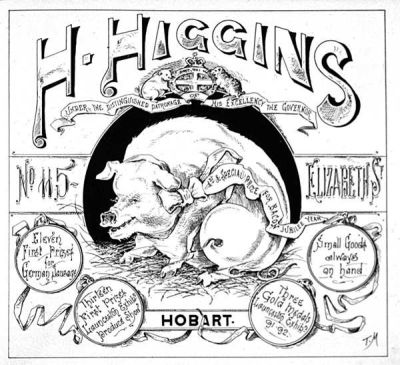 |
 |
|
Governors
The office of governor is the oldest in Tasmania's two centuries' experience of European settlement, and has evolved from one of almost absolute authority over a penal colony to that of titular head of a quasi-sovereign state, whose incumbents act largely on advice from the political executive while retaining sufficient 'reserve powers' to be regarded as ultimate guardians of the constitution. Although all governors have continued to represent the authority of the Crown, the office has passed through several distinct phases. From 1804 there were two lieutenant-governors, in north and south; from 1812 one ruled the whole island. Until 1855, when the colony (by then re-named Tasmania) acquired responsible government, this agent of the British Crown was also the colony's chief executive, answerable for some purposes to the governor of New South Wales but primarily to the Secretary of State for the Colonies in London. From 1856 the governor was expected to exercise almost all his constitutional powers on formal advice from the premier and cabinet, who were responsible to an elected parliament, though he continued to chair the Executive Council. Legislation which impinged on imperial affairs was to be reserved and, following Westminster conventions, the governor was allowed a discretionary authority in limited circumstances – principally in choosing or dismissing a premier, and granting or refusing requests for a dissolution of the House of Assembly, but always to ensure that the wheels of democratic government kept turning. Federation of the Australian colonies in 1901 did not affect the formal status of state governors. They continued to be appointed by the monarch on the formal recommendation of the British Secretary of State and continued to report to London in quarterly despatches. Although the Balfour Declaration (1926) and Statute of Westminster (1931) were acknowledgments by Britain that Australia, along with the other dominions, was a fully sovereign nation, state governors continued to see themselves as imperial envoys. Only with the appointment of Australians to vice-regal office was there a change of focus, the first in Tasmania being Sir Stanley Burbury (1973–82). With passage of the Australia Acts by the British and Australian parliaments in 1985–86 all state constitutional links with Britain were severed. Henceforth all appointments of governor were to be made on a premier's direct recommendation to the monarch and with Royal Instructions no longer issued. New Letters Patent, re-constituting the office, were also gazetted. The governor's authority derives principally from the state's Constitution Act (1934). At the 1999 commonwealth republic referendum 59.6 percent of Tasmanian voters rejected the proposal for change, and at the turn of the century residual republican debate did not normally include proposals for abolition of state governorships. Nevertheless, a strident republican assumed office as Tasmanian governor in October 2003. Richard Butler's tenure was dogged by public controversy from the outset, but not simply because of his republican sympathies. In August 2004, just nine months after Butler took office and following an upsurge of negative media publicity outside Tasmania, the premier sought his resignation. On several occasions during the twentieth century Tasmania's governor was required to exercise his reserve powers in sensitive political circumstances, most recently following the 1989 House of Assembly election, which left a 'hung' parliament. Although constitutional and ceremonial duties retained their importance for a state governor in the early twenty-first century, the social role of helping unify the citizenry and uplift its ideals was gaining wider public recognition. Peter Boyce |
Copyright 2006, Centre for Tasmanian Historical Studies |
